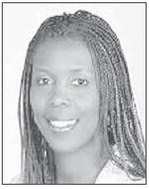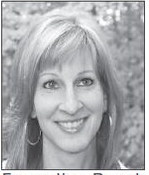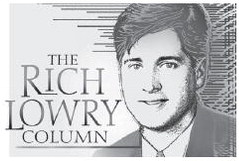Black and White
We found them in a drawer in the back of Mom and Johnny’s house in Ohoopee. We were probing around looking for photos of Johnny’s daughter, Barbara. When I pulled the album from its hiding place, several old black and white photos tumbled out onto the carpet. I picked them up and stared at the faces. “Who is this person, Johnny?” I
asked.
He pulled the first photo to his face and smiled. “That’s my mama, Joseph Maggie Bradham Collins,” my stepfather said. “They called her Josie.” One by one, he looked through the faded photos like a jeweler examining the miniature gear works inside a watch.
“What about these people? Who are they?” “That’s my mother when she was young, and that’s her brother, Richard,” he said before looking at the next photo. “That woman there in the middle is my grandmother. She was a Driggers.” He handed it to me to scrutinize, and I flipped it over to reveal the full name of his grandmother — Beadie Ann Driggers.
The people in the photos were not my people. My people are Laniers and Jarriels and Cowarts and Cains and Jarrards. But I share Johnny’s fascination with the faces of yesteryear.
To me, old faded photos (especially black and white and sepia-tone photos) are as valuable as gold — maybe even more. Someone captured the blink of an eye in a lifetime filled with millions of moments, preserving a person’s likeness so the rest of us down here on earth don’t forget what he or she looked like. Photos bridge the worlds of the living and the dead.
As an amateur genealogist and family historian, I’ve collected a great number of images of ancestors. I study them — stare at their faces and look for similarities with my own. I long to know the people in the photos, what they were doing in the pictures, what their lives were like, etc.
Sometimes I look at old photos and ache for the past. I find a photo of someone I love who has passed away, and all of a sudden, I get that familiar tightening in my throat and my face flushes hot. I fight back tears. I’d probably feel better if I just gave in and let myself have a big, ol’ ugly cry, but I resist.
The same day Johnny and I found the gray-scale photos of his family and the photos of his daughter, I found some color photos of the Jarriel clan of Tattnall County. There was Joyce Jarriel and second husband Bill Todd sitting side by side on my grandmother’s sofa and laughing hard about something. Aunt Gloria’s husband, Ray Anderson, was in one of the photos. One photo featured Edwin Jarriel stirring a giant pot of low country boil. He loved to cook for a crowd. I saw Leon, Sally, Monteen, Dawn and Yancey. They’re all gone now.
Like Johnny and his old family photos, I was drawn to the photos of my family like a moth to a flame and kept thinking to myself, “I wish I could go back and visit the past. I wish I could sit at that kitchen table with those people and listen to them tell their stories just one more time.”
But I can’t. None of us can. Back in 2008, country musician Jamey Johnson came out with an award-winning song titled, “In Color.” The first two stanzas demonstrate the power of old photographs.
I said, “Grandpa, what’s this picture here?
It’s all black and white. It ain’t real clear. Is that you there?” He said, “Yeah, I was eleven.” “Times were tough back in ‘35. That’s me and Uncle Joe just tryin’ to survive A cotton farm, in a Great Depression.”






out of
Posted on